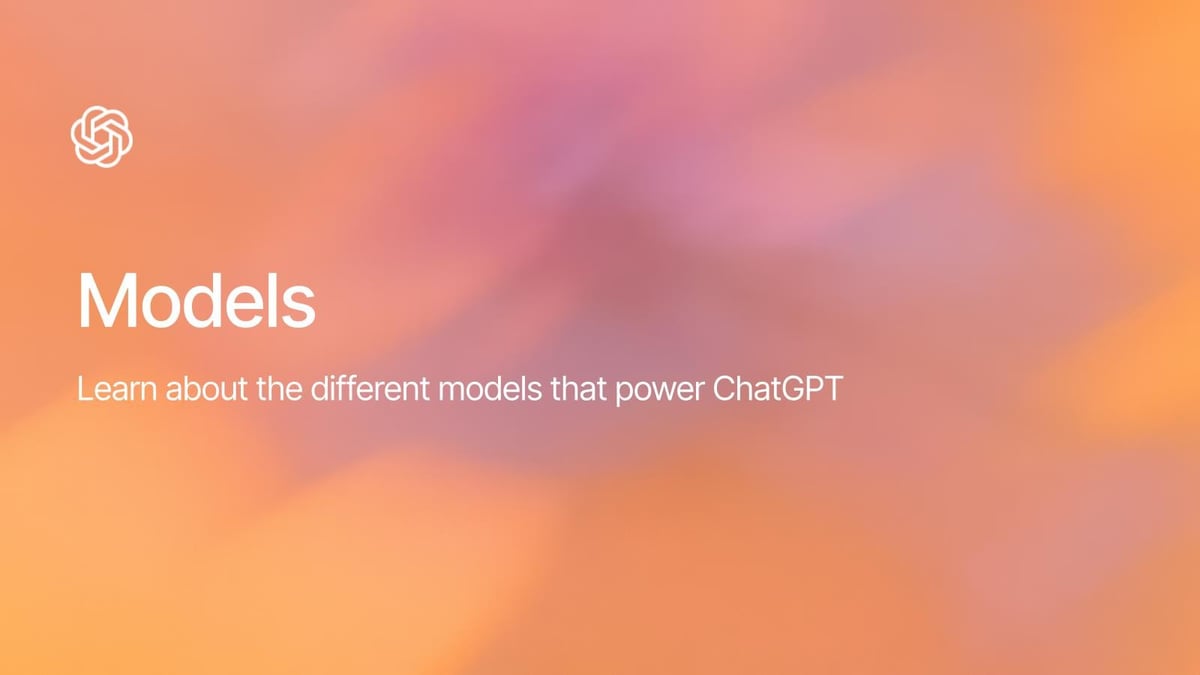Models in ChatGPT
At the heart of ChatGPT are large language models (LLMs). A model is a system trained on patterns of language, math, code, and reasoning so it can generate helpful responses to your questions or tasks. In simple terms, a model is what makes ChatGPT “think.” For example, when you ask ChatGPT to draft an email or analyze a dataset, the model is doing the work of interpreting your request and producing a response.
Models aren’t unique to ChatGPT—many other AI tools and applications are built on large language models, either from OpenAI or from other companies. That means if you’ve used a third-party product with generative text, image, or reasoning capabilities, there’s a chance that the underlying intelligence came from the same model that’s powering your ChatGPT experience today!
Understanding models helps you choose the right one for your task. Some are optimized for speed and efficiency (great for quick answers), while others are designed for accuracy and reasoning (better for complex problem-solving). Knowing the difference means you can balance performance, cost, and reliability in your day-to-day work.
Current models
As of August 2025, the default model in ChatGPT is GPT-5. In ChatGPT today, you’ll see different versions of the GPT-5 family available. Each is designed with slightly different trade-offs:
- GPT-5: The standard, most widely used model—powerful, versatile, and reliable for a broad range of tasks like writing, brainstorming, or research. When you use GPT-5 , it will automatically decide whether to use its Chat or Thinking mode for your request.
- GPT-5 Thinking: Applies deeper reasoning before answering. The decision to “think longer” uses signals from your prompt and conversation, as well as learned patterns from how people manually choose models, their preferences, and how often the model’s answers are correct.
- GPT-5 Pro: Specifically trained to handle multi-step reasoning, logic puzzles, and tasks that require carefully working through problems. While slightly slower, it excels at breaking down complex questions step by step.
What does it mean to “think longer”?
You might be wondering why a large language model sometimes “thinks longer”. Reasoning is the ability of a model to work through problems logically, rather than just giving the most likely answer.
In practice, this means reasoning models are often better at tasks like:
- Debugging code and explaining why an error happens
- Breaking down math problems into intermediate steps
- Analyzing a case study and making recommendations based on evidence
For the majority of workplace needs—drafting documents, summarizing information, analyzing data, generating creative ideas, or building simple automations—non-reasoning models are the right starting point. As you experiment more over time, you may choose to explore GPT-5 Thinking or GPT-5 Pro.
Additional considerations
- Other tools using OpenAI models: Many apps integrate with OpenAI models via the API. You might encounter capabilities similar to ChatGPT inside a productivity app, a customer service bot, or a learning platform—even if it doesn’t say “ChatGPT” on the label.
- Model improvements: OpenAI regularly improves models, adding new capabilities like better reasoning, memory, or multi-modal features (e.g., image and voice). You may notice changes in performance over time.
- Choosing a model: In most cases, the default (GPT-5) is a safe, balanced choice. Please note that your Enterprise workspace might have limits on which model you have access to, as some models incur additional costs.
Related resources:



